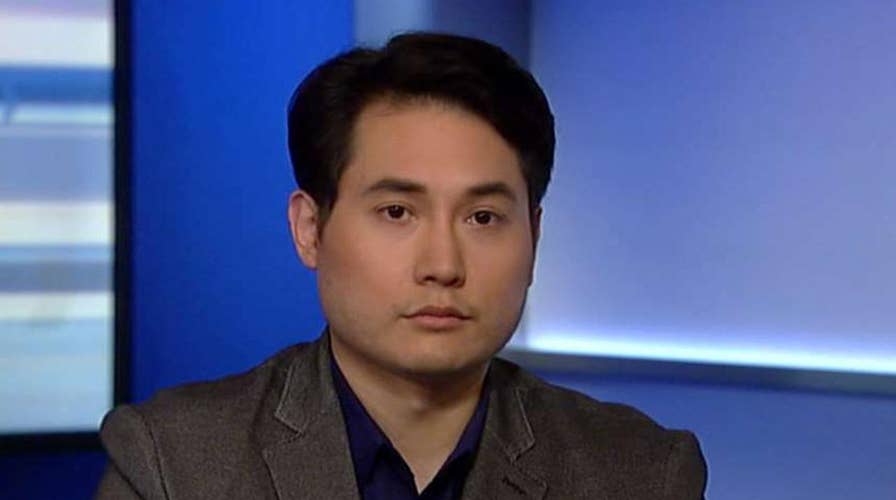Andy Ngo on suffering a brain injury from Antifa assault
Journalist Andy Ngo speaks out on being attacked by Antifa on 'The Ingraham Angle'
EXCLUSIVE: He might be the most hated man in the room depending on where he goes, but Andy Ngô has undoubtedly amassed a tremendous following for his experience covering the ins and outs of Antifa.
The born-and-raised Portlander and second-generation Vietnamese American, a conservative journalist who serves as the editor-at-large of The Post Millenial, is now a New York Times bestselling author thanks to his recently published tome, "Unmasked: Inside Antifa’s Radical Plan to Destroy Democracy."
In "Unmasked," Ngô explores not only the history of Antifa both in and outside the United States, but also his own experiences covering what he describes as an organized community of radical, left-wing anarchists.
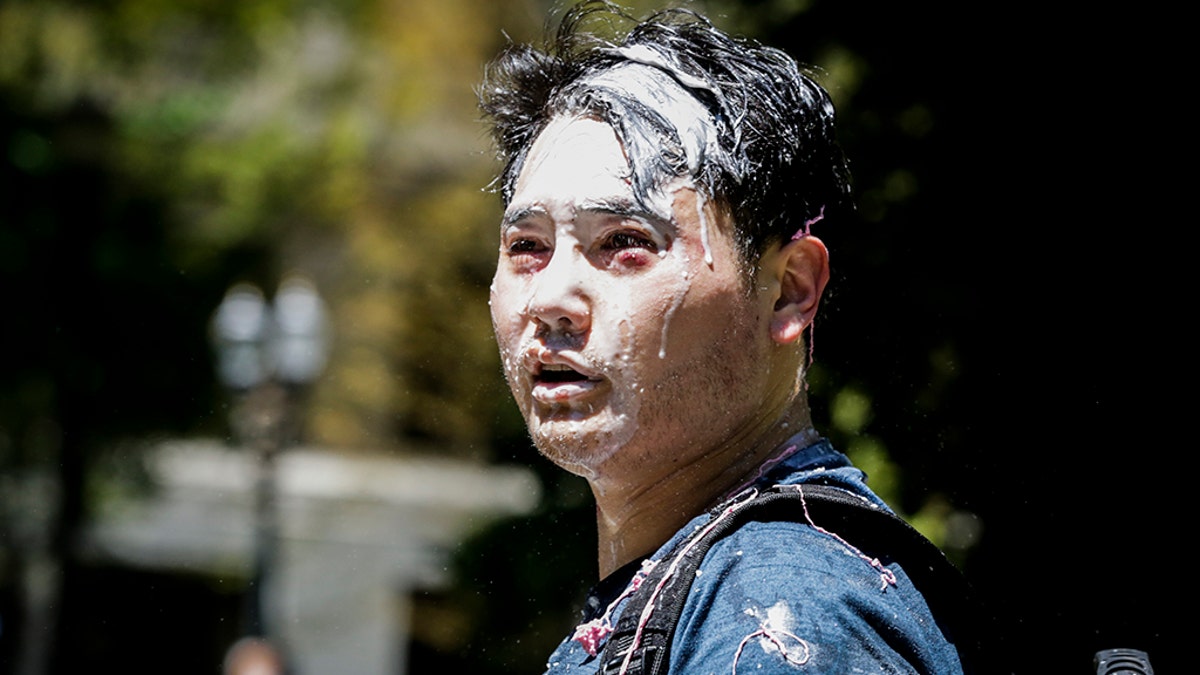
Andy Ngo, a Portland-based journalist, is seen covered in an unknown substance after unidentified Rose City Antifa members attacked him on June 29, 2019 in Portland, Oregon. (Moriah Ratner/Getty Images, File)
Opponents tried to stop the book from being published, Ngô, 33, wrote on Twitter. Even when it was released, some took issue with the book being sold in stores, according to reports. Portland's famed shop Powell's Books opted not to sell the work after union employees protested Ngô "and everything he represents," reports stated.
Over the course of years, Ngô has endured physical attacks from people in crowds while covering Antifa or radical events, and even unwanted visitors at his and his parents’ homes, Ngô wrote in his book.
But everything came to a head earlier this year when Ngô left the country amid threats of violence and "an escalation of safety concerns," he told Fox News.
"It was just not safe anymore for me. I had already been on borrowed time," he said when reached by phone.
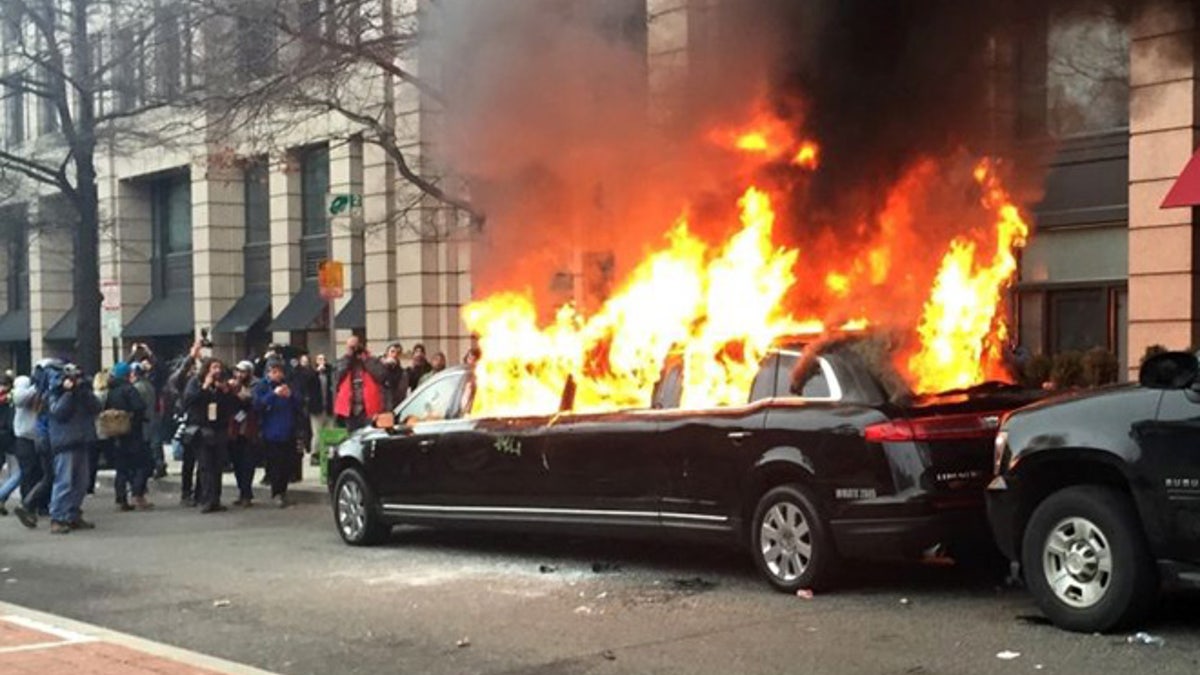
Protesters set a parked limousine on fire in downtown Washington, Friday, Jan. 20, 2017, during the inauguration of President Trump. (AP Photo/Juliet Linderman, File)
Ngô grew to have a keen interest in Antifa following the outcome of the 2016 presidential election, he said.
"Absolutely nobody was expecting it," he recalled. "And the response to that democratic outcome was for people to take to the streets in masses to reject that outcome, and in Portland, many people chose to manifest their frustration through violence and destruction."
In his coverage on the ground in Portland at the time, Ngô said he began to see "the groundwork being laid for something much worse to come."
"There was just this overall, not just a shift in the attitudes in the public toward left-wing political violence, but also the hollowing out and weakening of law enforcement institutions," he said.
ANTIFA PUBLIC ENEMY NO. 1
Ngô was a student journalist at Portland State University tasked with working on election night in 2016. He said what he saw shocked him.
He described how rioters descended upon downtown Portland, with their faces covered and "dressed head-to-toe in black." They carried bats, crowbars and hammers and were "just destroying the he-- out of the place."
"That was shocking then, and I say that now and it’s kind of, that’s just another, any day in Portland today," he said. "The response from the public at that time was to excuse it. They thought that it was [a] completely legitimate response because of fear and anger over what they thought was not a legitimate election."
He described hearing at the time that Trump’s election "was the first step toward ascendant fascism and the rise of a totalitarian regime in the U.S."
MICHIGAN DEMOCRAT ELISSA SLOTKIN CLAIMS ANTIFA ARE 'BOOGEYMEN WHO AREN'T THERE'
"These extremist, radical, unfounded ideas were given space to propagate in our papers of legacy, in our homes and... through broadcast and radio, and of course to online news sites," Ngô said. "That helped to really radicalize the left, in my opinion."
Ngô’s resolve to cover Antifa "became more clear and focused" from 2017 through 2018, when he began to notice discrepancies in what he was seeing at riots versus what was being reported, he said.
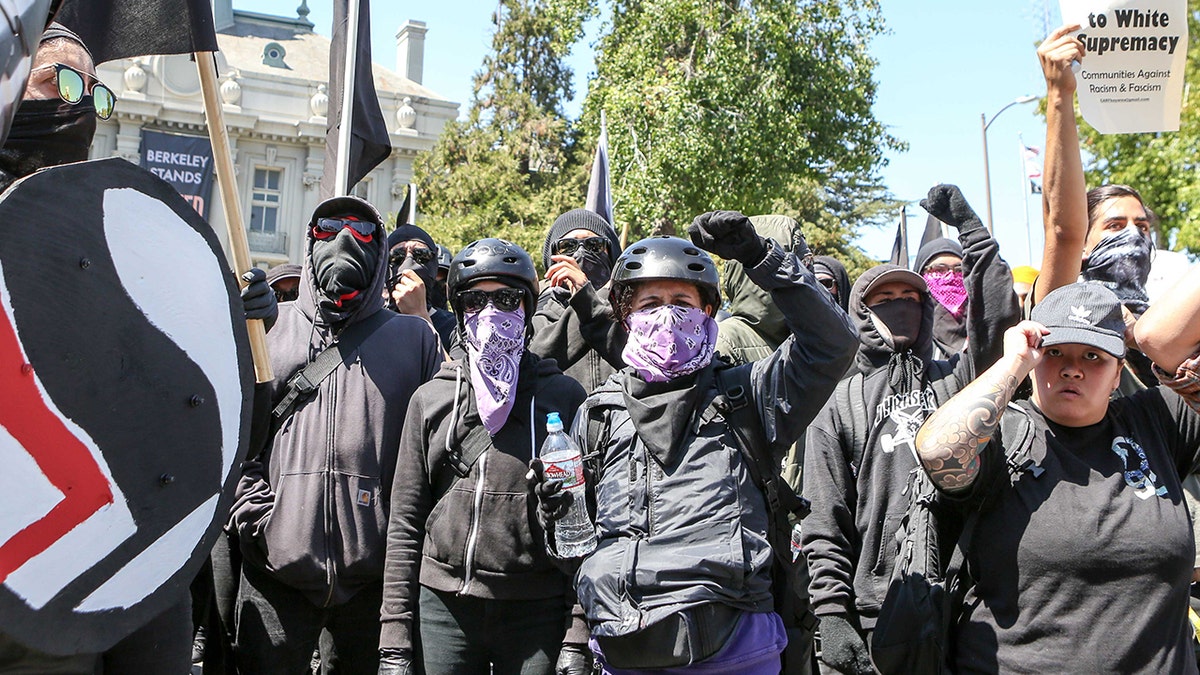
Antifa members and counter-protesters gathering during a right-wing August 2017 rally at Martin Luther King Jr. Park in Berkeley, California. (AMY OSBORNE/AFP/Getty Images, File)
"After every riot that was occurring in Portland and Seattle, the coverage from the local press was not the honest picture about who these masked militants actually were," he said.
Ngô continued: "The way they were described, they were lionized and described essentially as heroes who are protecting their communities because police don’t protect people, because police are racist and transphobic and homophobic."
There grew to be a narrative that it was "up to the people to protect their own."
"And that's what these people are doing – protecting communities from neo-Nazis and White supremacists and the KKK," he said. "That’s the story that the public was being told."
THE VIEW'S JOY BEHAR: VIOLENT LEFT-WING GROUP ANTIFA IS ‘FICTITIOUS IDEA,’ NOT 'A REAL THING’
He continued his reporting on the Antifa insurrection for years. But as time went on, his name and face became more well-known among the crowds. His writing and reporting style, he said, helped to put him on their radar.
He became a target.
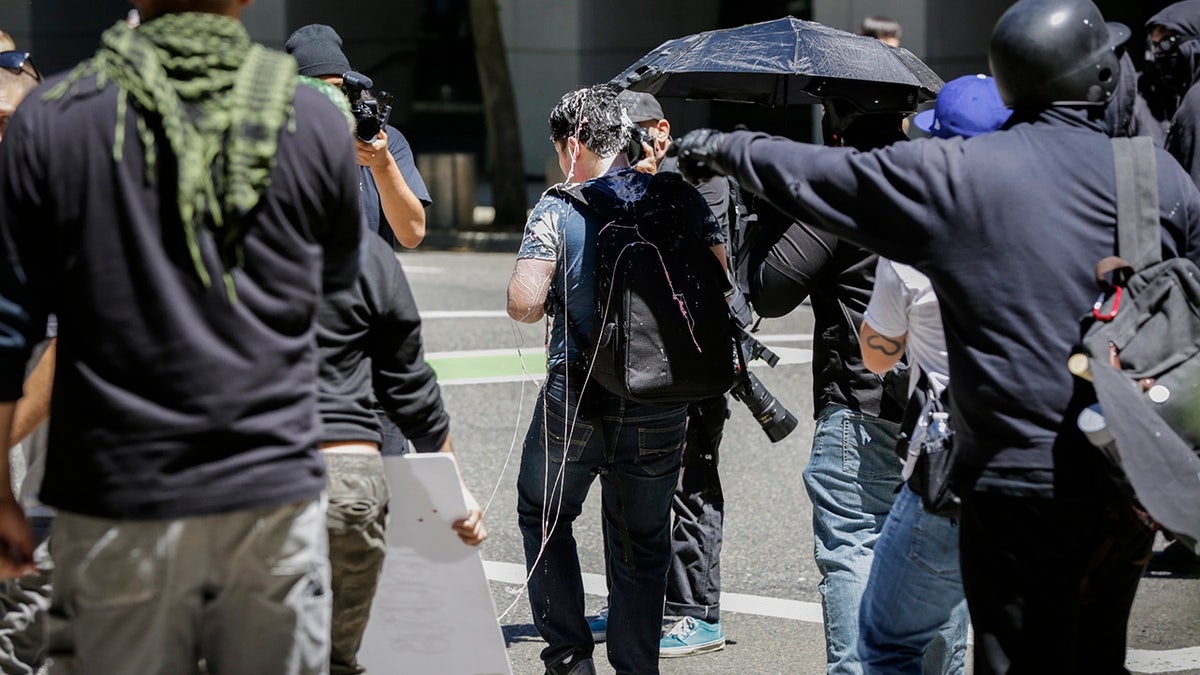
Andy Ngo covered in an unknown substance after unidentified Rose City Antifa members attacked him in 2019 in Portland, Ore. (Moriah Ratner/Getty Images, File)
"I was challenging the narrative that they had, the dominant narrative that they had within both the local press and therefore in the national press, as well," he said.
In 2019, he was attacked by a mob of masked Antifa members and had to be hospitalized, where he learned his brain was hemorrhaging, he wrote in "Unmasked."
But even after Ngô’s assault, some people in the public and the media criticized him, or questioned his intentions or whether his injuries were as bad as he was making them seem.
"As I watched him stream a close-up of his bloody face to more than a million people, it seemed like a defining moment in a new kind of media career," wrote a Buzzfeed reporter who was with Ngô at the time of his assault.
The reporter described how Ngô was chronicling his attack and its aftermath on Twitter and through videos, even while he was in the hospital.
He also noted that despite criticisms that Ngô would "provoke people," the attack appeared unprovoked.
WARNING: THE FOLLOWING CONTAINS EXPLICIT LANGUAGE
Nonetheless, amid a flood of new and continuing media attention, people came forward with claims that Ngô "inflates" or "misrepresents" events for his own benefit.
"[I]t would be a mistake to think this violence came out of some vacuum-sealed ideological intolerance toward conservatives. Ngo has been building to a dramatic confrontation with the Portland far left for months, his star rising along with the severity of the encounters," the Buzzfeed article adds. It notes that Ngô’s Twitter bio at one point stated, "Hated by Antifa." It no longer features those words.
The report continues: "The man’s literal brand is that anti-fascists are violent and loathe him."
Speaking to Fox News in late March, Ngô said he felt that his history with Antifa should not disqualify him from covering the topic. He acknowledged it has been "hard not to be treated as a colleague by people who work in this industry."
When Fox News asked Ngô about past social media posts that questioned his credibility or accused him of misrepresenting events, Ngô recognized that he has made errors in his reporting in the past. Such an instance could arise, he said, while live-streaming protests and providing his interpretation of events, only to later learn that something was incorrect.
He said when that happens, he issues updates or corrections as needed to address the error.
"That type of stuff I don’t think is unique to me as a journalist, but to my detractors, they think it defines me," he continued. "It’s very unfair, but I don’t think it’s operating out of good faith."
ANTIFA
In his book, Ngô pushes back against the narrative that "Antifa are merely ‘anti-fascists.’" Instead, he writes, it is "a violent extremist movement that attacks all kinds of targets under the guise of ‘anti-fascism.’"
Antifa’s current "plan," Ngô writes, "is to create a decentralized system of cells and affinity groups who share in the same ideology through disseminated propaganda and literature."
MUMFORD & SON BANJOIST STEPS AWAY FROM BAND AFTER PRAISING ANTI-ANTIFA BOOK
"The goal is to inflict maximum damage without death and to maintain the momentum of riots to drain government resource and law enforcement morale," he writes.
He says Antifa members "specifically train for street violence." They are often seen at protests wearing masks and dressed in black and, sometimes, carrying umbrellas.
The umbrellas, he alleged in a message to Fox News, "are specially used to cover the comrades when they commit crimes (starting fires, destroying cameras, etc) and to be used as melee weapons."
Speaking to lawmakers in September, FBI Director Christopher Wray said Antifa is "not a group or an organization. It’s a movement or an ideology."
But he also noted that Antifa was a "real thing" and the bureau had worked on "any number of properly predicated investigations into what we would describe as violent anarchist extremists."
Ngô told Fox News that Antifa had a huge "membership explosion" after 2016 "because they had the narrative support of the mainstream media with its daily commentary about fascism in America and how Trump was a Hitler-like figure."
He spoke about how there was "excitement" within the Antifa community surrounding what was, at the time of the interview, the upcoming trial of former Minneapolis police officer Derek Chauvin. Chauvin is currently on trial for murder and manslaughter charges in connection with the May 25, 2020, death of George Floyd.
"Antifa is always waiting in the background to be able to exploit any type of shootings, or tragedies or deaths involving police and potentially a person of color so that they can organize around that and to radicalize people around that," he said.
Ngô added that periods of growth within the Antifa community "are short-lived" and are tied to particular narratives surrounding events. In 2016, it was the election, in 2017, it was Trump’s inauguration and the fatal car attack on counterprotesters at a "Unite the Right" rally in Charlottesville, Virginia.
"It's not like a constant upward growth," he said, "but I think in other areas where they're having consistent success, [in] my view, is more so their ability to really capture more minds within the mainstream left, minds in the Democrat Party."
He argued that Democrats often argue against the threat of Antifa by going back to "the body count," or lack thereof, as a result of Antifa-linked events. He later pointed to cases of alleged Antifa-linked killings, such as the shooting death of Aaron "Jay" Danielson allegedly at the hands of reportedly self-described Antifa supporter Michael Reinoehl. In that case, he said, "it somehow doesn’t count as a far left-inspired attack."
CLICK HERE TO GET THE FOX NEWS APP
"It's an argument that's powerful, right? When you can say, look at how many people associated with a far-right ideology – how many people they've killed in the past two decades versus how many far-left people killed," he said.
"That is one argument, but ... it cannot be the only argument."




















